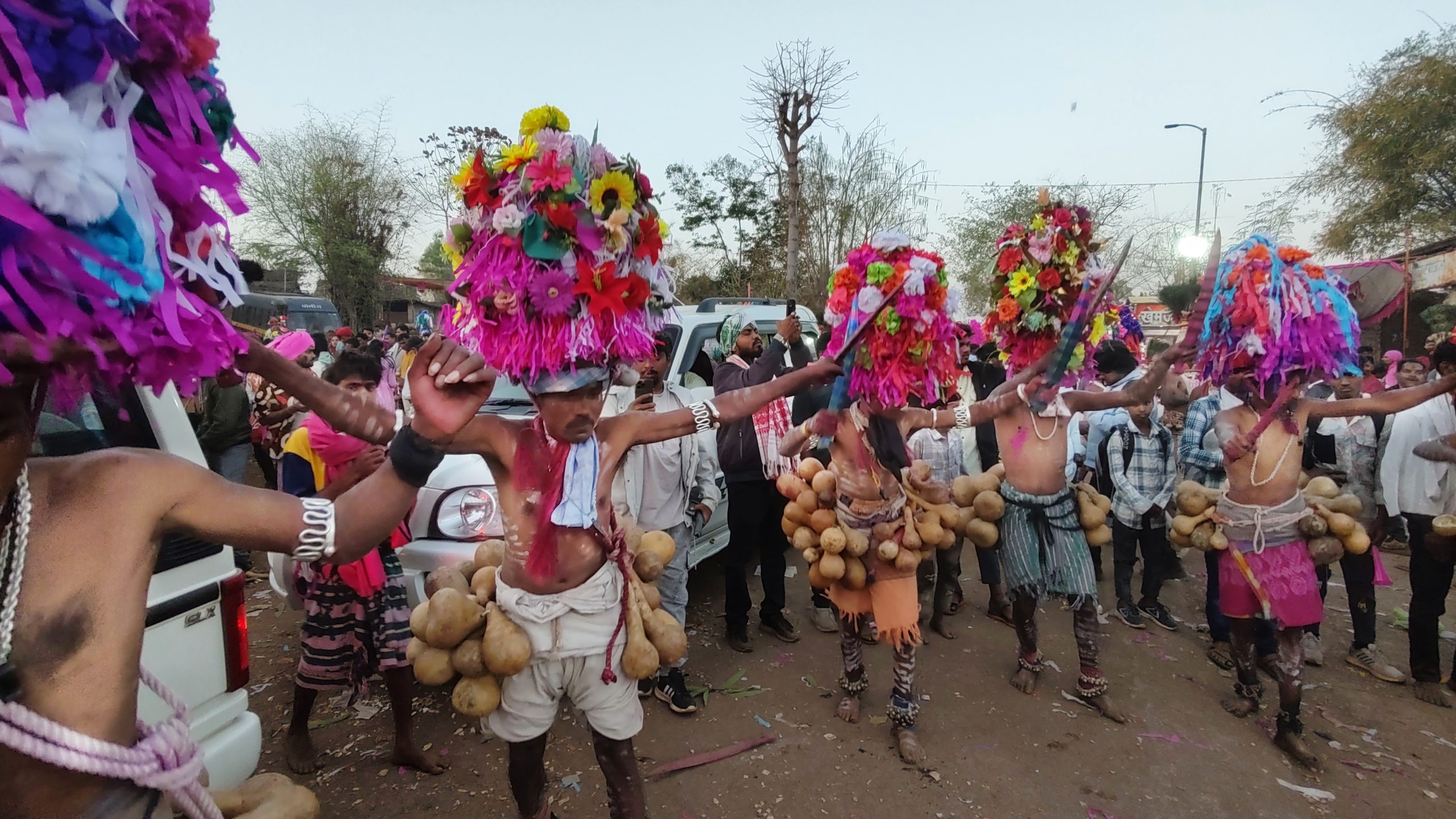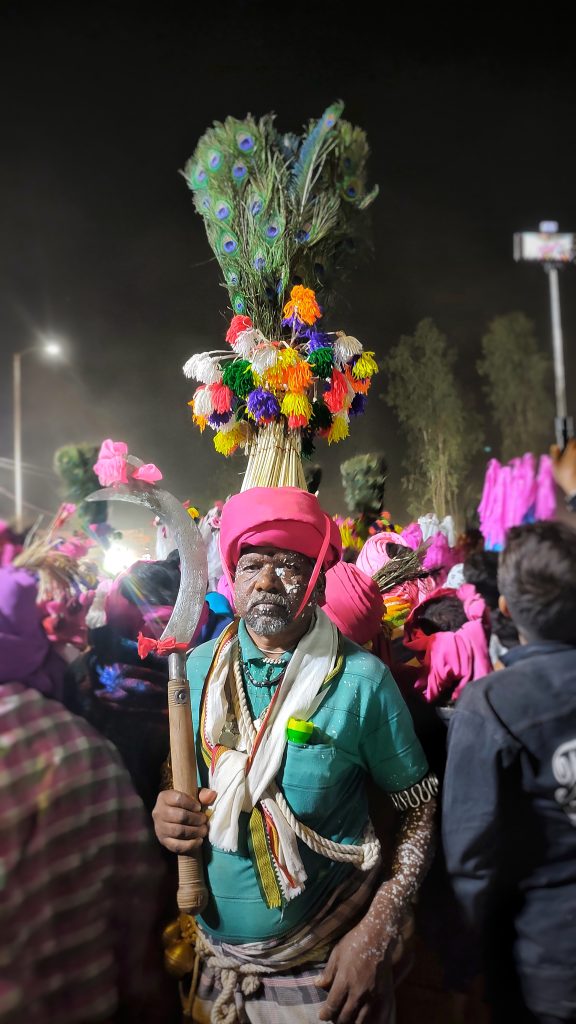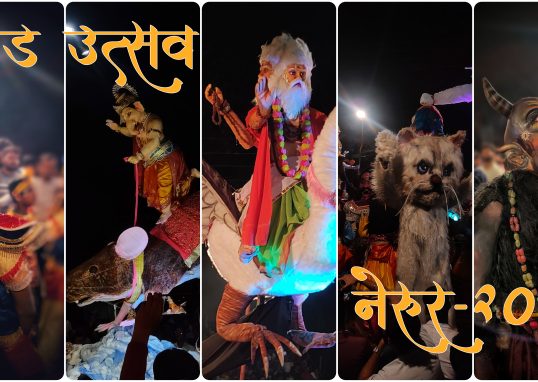Kathi Holi

Holi is a sacred ancient tradition celebrated in many states of India and in Nepal as well. Holi is celebrated at the end of winter on the Purnima (full moon day). The celebration of Holi has many purposes, one of which is to bid farewell to winter and welcome the spring season.
The night before Holi, people gather together to sing, dance, and light bonfires, in a ceremony known as Holika Dahan. The very next day, they celebrate Dhulivandan.
India’s largest tribal celebration is known as Rajwadi Kathi Holi, which is celebrated in Kathi village of Nandurbar district in the Maharashtra state. Kathi village is part of the Satpuda mountain range. This celebration has a rich history, and hence tribals from nearby villages from multiple states gather here to celebrate Holi every year.
The King of Kathi Sansthan started celebrating Holi in 1246 (probably even before this date), and to this day, tribals continue to celebrate Holi with the same traditions. As of today, Kathi Sansthan is divided among the states of Maharashtra, Gujarat, and Madhya Pradesh. Tribals from these states gather in Kathi village to celebrate Holi.
The preparation for this event starts 15-20 days before Holi. A few people cut the longest bamboo from the forest of the Gujarat region and travel with the bamboo to every village. People worship the bamboo in every village and bring it to Kathi village for the holika dahan.

Tribals also begin to gather in Kathi village with sunset. They travel around 150-200 kilometers to celebrate Holi here. The Pavra, Dandka, Tadavi, Mavchi, Kokani, Varla, and Bhilla are the tribal communities that reside in this region.
They dress up as they wish for Holika. Some men dress in women’s attire. Everyone ties ghungroo around their waist or legs and dried bottle gourds (dudhi in Marathi) around their waist. They make caps from feathers of peacocks or pieces of fabric. They use lime powder (Chuna in Marathi and Hindi) to make various designs on their bodies. They also use drums, whistles, and ghungroo to create music, and dance throughout the night.
Before sunrise, villagers bring holi to prepare dahan and worship. The descendants of king of kathi sansthan have privilege to worship first. After holika dahan, people make rounds and collect ash. Throughout the night, people stay awake, dance and celebrate Holi. Every year, tribals from different parts gather to celebrate Holi in this traditional manner. They don’t need any invitation, nor do they raise funds for the celebration. Everyone puts in their 100% effort to celebrate Holi.
They dance, they help each other, regardless of whether the person is known or unknown. They communicate in their own language and treat every outsider like a guest at their doorstep.
In the morning, everyone disappears within a few minutes with their families. While returning, they make wishes to Holika for their land, their health, and their family. You can see the happiness not only on their faces but also in their eyes.
So, that was my experience of Rajwadi Kathi Holi this year. Would you like to witness it with me next year?
Author
velkar.suryakant@gmail.com
Related Posts

Mand Utsav, Nerur
Kokan ! A stunning region on the western coast of India, Kokan is known for its breathtaking beaches, mouthwatering traditional cuisine; especially...
Read out all